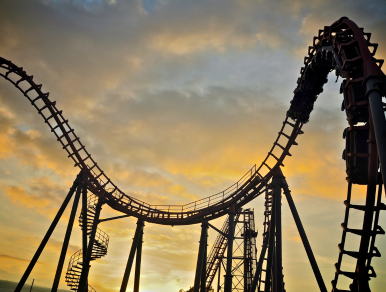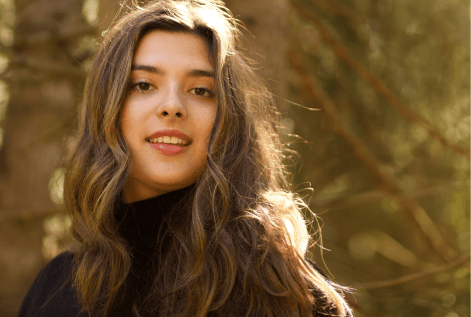Crafting stories from start to finish


We’ve talked a lot about the importance of putting the hook in the first chapter in order to entice your readers and of building and releasing conflict in order to keep them. In order to effectively build a long-running web novel, it helps to think about how you are going to structure your reader experience over the long term of the story. Thinking about structure can feel intimidating, but you don’t need to have a spreadsheet to write a good story. All you need to do is think about your story as having Beginning, Middle, and End phases. Each phase of the story has a unique function and builds successively on the ones before it.
Beginning, Middle, End
Beginning
The Beginning phase of the story is where you’re working to create investment, meet the characters, introduce the conflict, and bring your reader into the world of the story through your characters’ Goals, Motivations, Conflicts, and Stakes. This is not just scene-setting, it’s about initiating the sequence of events that gets your story moving. The Beginning takes up approximately 25% of your story
Common elements:
- Introduce the hook in the first chapter
- Inciting incident (if different from the hook)
- Establishing goals, motivations, conflicts, and stakes
- Introduce the problem and how the protagonist(s) are going to respond to it
- Who are the characters? What do they want and why?
- The story tension rises throughout this section until a decisive event pushes us into the next phase
Middle
The Middle of the story is where most of the action happens. The middle is also the bulk of the wordcount, and the bulk of where the reader spends their time. The promises you made in the Beginning come to fruition in the middle. This is where we spend time with the characters and experience their highs and lows as they deal with the ramifications of the Inciting Incident and their Goals. About 50% of your story should be the Middle.
Common Elements:
- Raise the stakes and the story tension through character actions and reactions
- Complicate the conflict/problem by adding sub-steps to the original goal, making the goal more difficult, or introducing additional obstacles the characters must overcome to reach their goal
- Reveal more character backstory and explore motivations through the front story
Unlike the Beginning, the elements of the Middle can and should happen multiple times. While you only have one Inciting Incident, you can and should raise the stakes and complicate the conflict multiple times throughout the Middle. If you’re having trouble thinking about how the middle should proceed, come back to your protagonist’s GMCS. Given your protagonist’s GMCS, what kinds of events would they find challenging? What would they find most challenging?
End
The End is where the events of the Beginning and Middle come to their crisis. All the action of the Middle has fundamentally changed things for your characters. The problem created in the Inciting Incident and complicated throughout the Middle is now at a crisis point where the characters need to resolve it. The End comprises about 25% of your story.
Common Elements:
- Bring the problem to its crisis
- Sharply rising tension (fed by the Middle) that explodes into a climactic event
- The Goal from the Beginning is either attained or lost
- Demonstrate how the characters and the situation have changed as a result of the story
Serialized Stories
Beginning, Middle and End phases also occur in serialized stories. Even though they keep running, a serialized story should still have Beginning, Middle, and End phases. Rather than just being infinite Middle, successful Serial stories repeatedly run through Beginning, Middle and End phases of smaller story arcs. This allows you to keep your audience glued to the story’s ups and downs, and to keep evolving the plot and characters. The only difference between a Serial story and a completed story is that the Beginning and Ending phases lead into one another. Each Beginning phase sets up a new problem for the characters to wrestle with over the course of the arc, and each Ending phase ties up that problem and sets the stage for a new one.
Beginning, Middle, End + Storycoaster
If all of this sounds familiar, that’s because we’ve talked about similar things before when we talked about the Storycoaster. The Storycoaster is about building effective scenes that keep your reader engaged, but we can also look at the Storycoaster as a way of talking about story action and plot more broadly.
Here’s our regular Storycoaster that describes a scene:
Image description: An orange sine wave. There are 4 sections of black text along the first portion of the wave: “Before it Happens” with a large blue arrow moving up the wave, “It Happens” at the peak of the wave, “Consequences” with a large blue arrow moving down the wave, and “What Changed?” at the bottom of the wave.
And here’s our escalated Storycoaster, where we raise the story tension and conflict over the course of the story:
The escalated Storycoaster also functions as an illustration of Beginning, Middle, and End phases of the story, like so:
In the Beginning phase of the Storycoaster, the tension and conflict start out at a low point. The protagonist doesn’t have that many problems to deal with, and the conflict is just getting started. As the Beginning phase progresses, each scene elaborates on the conflict, and by doing so, makes clear the protagonist’s Goals, Motivations, and Stakes. We enter the Middle with a new baseline of tension, which then escalates over the course of this section as the protagonist tries to solve their Conflict and the Conflict keeps getting worse. The Conflict getting worse is what escalates the tension in this section. By the time we reach the highest peak of of the Storycoaster, we’re entering the End phase. All the conflict and tension we’ve built up throughout the story so far reaches its inevitable climax, and the Conflict from the beginning is finally resolved. On the way down, we get a sense of how the characters have changed due to their journey.



















